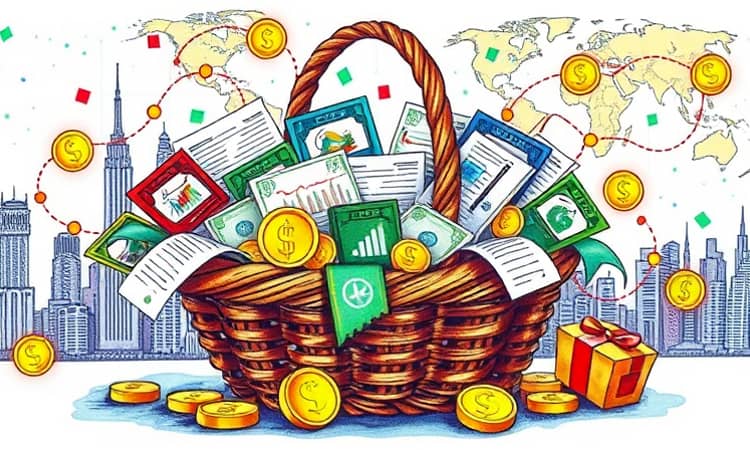In today’s fast-paced financial world, Exchange-Traded Funds (ETFs) have emerged as a beacon of innovation and accessibility. From the novice investor charting their first course to the seasoned professional seeking optimized diversification, ETFs offer a unique blend of benefits that few other instruments can match. This article explores their power, mechanics, risks, and practical steps to harness their potential.
The Power of Diversification
Diversification is the cornerstone of modern portfolio theory. By spreading investments across multiple assets, you can reduce the impact of any single underperforming security on your overall holdings. ETFs encapsulate this principle in a single, easily tradable vehicle.
With ETFs, you gain:
- Effortless portfolio diversification across sectors, from technology to consumer staples.
- Exposure to global markets in one trade, spanning Asia, Europe, and emerging economies.
- Access to niche themes and innovations, such as robotics, renewable energy, or fintech.
By purchasing a single ETF share, you effectively own a slice of dozens or even hundreds of underlying assets, smoothing out company-specific volatility and fostering a more resilient portfolio.
Cost Efficiency and Flexibility
Cost matters. High fees can erode returns over time, turning a promising portfolio into a stagnant one. ETFs have risen to prominence by offering remarkably low fees and unparalleled flexibility.
- Incredibly low annual expense ratios—some as low as 0.03%—compared to mutual funds.
- Intraday trading flexibility like stocks, enabling limit orders, stop orders, and margin strategies.
- Minimal investment requirements for everyone, with some ETFs allowing purchases for as little as a few dollars.
This blend of affordability and agility empowers investors to manage positions dynamically, respond to market movements, and keep more of their hard-earned capital working for them.
Transparency and Control
In an era where information is king, ETFs deliver unparalleled transparency and control over your investments.
Key transparency features include:
- Comprehensive daily holdings transparency, letting you see exactly what you own.
- Efficient tax treatment on gains, as in-kind creations and redemptions often avoid capital gains distributions.
- Structured legal frameworks for safety, whether organized as trusts, corporations, or open-ended funds.
With insights into daily portfolio composition and tax-advantaged mechanisms, ETFs place you firmly in the driver’s seat of your financial journey.
How ETFs Work Behind the Scenes
Understanding the mechanics of ETFs demystifies their operation and fosters confidence in their structure. At the heart of each ETF lies the creation/redemption mechanism, which keeps market prices aligned with underlying Net Asset Value (NAV).
Authorized participants—typically large financial institutions—assemble or dismantle ETF shares in-kind, delivering baskets of underlying securities in exchange for ETF shares, and vice versa. This process:
- Ensures price stability relative to NAV.
- Minimizes tracking error versus benchmark indexes.
- Facilitates timely dividend and interest distributions through cash payouts or reinvestment plans.
The everyday investor enjoys these benefits without needing to manage complex operational details, simply trading ETF shares on an exchange like any stock.
Comparing ETFs, Mutual Funds and Index Funds
When deciding where to allocate your investment dollars, understanding the distinctions among ETFs, mutual funds, and index funds is crucial. The table below highlights their key features:
Potential Risks and How to Navigate Them
No investment is without risk. ETFs, while versatile, carry their own set of considerations. Being informed and prepared helps mitigate potential downsides.
Major risks include:
- Market risk from underlying assets, meaning if the market falls, so can your ETF’s value.
- Tracking error against benchmarks, where tiny deviations can affect performance over time.
- Liquidity challenges in niche ETFs, leading to wider bid-ask spreads.
By diversifying across broad-based ETFs and monitoring expense ratios and trading volumes, investors can manage these risks effectively.
Practical Steps to Get Started with ETFs
Embarking on your ETF journey can feel daunting, but the path is straightforward:
- Define your goals: Determine whether you seek growth, income, or sector exposure.
- Choose the right platform: Select a brokerage offering low commissions and educational resources.
- Research ETFs: Compare expense ratios, liquidity, and tracking history.
- Build your portfolio: Allocate based on risk tolerance, time horizon, and market outlook.
- Monitor and rebalance: Periodically review holdings and adjust allocations to stay aligned with your objectives.
With these actionable steps, even first-time investors can enter the market confidently, leveraging ETFs to build resilient, diversified portfolios.
Embracing the Future of Investing
The ETF landscape continues to evolve, with record issuance of thematic, active, and ESG-focused products. This proliferation signals a democratization of financial tools once reserved for institutions. Today, individuals can access sophisticated strategies and global markets with a few clicks.
By understanding the structure, benefits, and risks of ETFs, you empower yourself to make informed decisions. Whether you aim for steady dividend income, broad market exposure, or targeted thematic plays, ETFs provide a flexible, cost-effective framework to pursue your financial aspirations.
Now is the time to explore, engage, and elevate your investment journey with ETFs. Armed with knowledge and practical guidance, you stand ready to harness the full potential of this transformative asset class.














